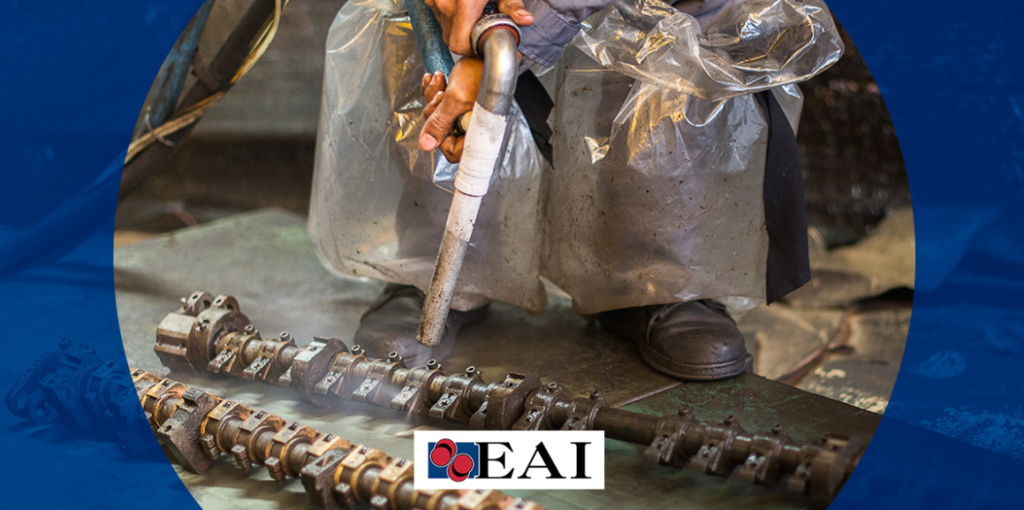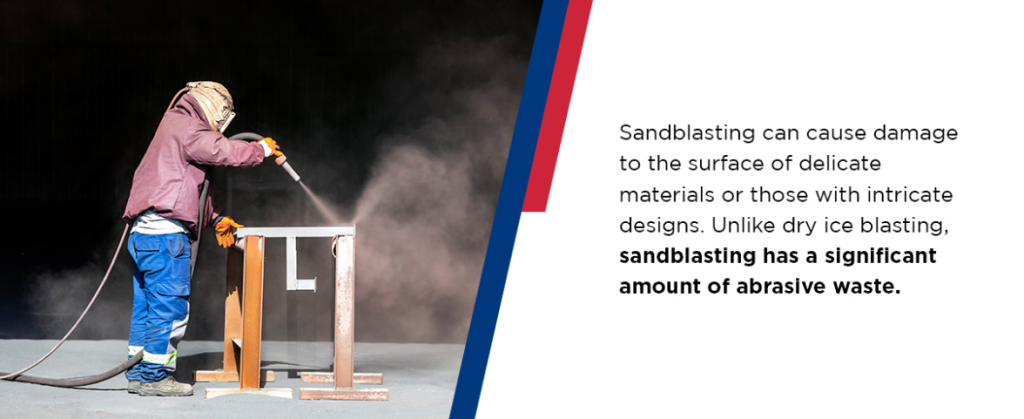
Dry ice blasting leverages the power of carbon dioxide (CO2) pellets, which are propelled at a supersonic speed towards a surface to eliminate contaminants. It eradicates dirt, grime and unwanted coatings without causing damage to the underlying surface.
Unlike many alternative cleaning methods, dry ice pellets sublimate upon impact and do not create any secondary waste. This waste reduction minimizes cleanup efforts and contributes to a more sustainable and environmentally friendly cleaning option.
The dry ice blasting process employs reclaimed carbon dioxide, making it a sustainable, green, and a closed-loop system. It doesn’t introduce harmful chemicals or solvents into the environment or produce greenhouse gasses. The eco-friendly approach aligns perfectly with the demands of modern businesses striving for sustainability.
Carbon dioxide (CO2) pellets, when propelled at high speeds, undergo a fascinating transformation — they sublimate or turn into gas upon contact with the surface being cleaned. The cleaning process begins with the creation of dry ice pellets. Liquid CO2 is stored under high pressure and then transferred to a pelletizer, where rapid expansion and an extrusion die convert it into granules of dry ice. These granules are then propelled through a blasting nozzle using compressed air at astonishing speeds, ranging from 75 to 1,000 feet per second. When these dry ice pellets impact the substrate, a kinetic effect is created, which works most efficiently when the substrate is at room temperature.
This temperature differential between the room temperature substrate and the dry ice initiates temperature differentials within the layers of the contaminant. These differences lead to micro-cracks forming within the layers, disrupting the bond between the contaminant and the substrate.
As the dry ice granules impact the substrate, the temperature difference between the surface and the dry ice, coupled with energy dissipation, causes the dry ice pellets to expand by a staggering 700 times their size. This expansion generates high pressure between the surface and the contaminant particles, effectively lifting the broken contaminant layer from the substrate.
Each of the following methods has its own set of advantages and disadvantages. Areas that we will be investigating include the efficiency and environmental responsibility of the process, as well as its impact on workplace safety.
Soda blasting is similar to dry ice, as it is a nonabrasive method. The process involves using compressed air to propel baking soda particles at the surface. It is suitable for use on delicate surfaces, such as wood, plastics and thin materials.
Baking soda is nontoxic and biodegradable, making it fairly eco-friendly and safe for workers. However, it leaves a residue behind on the surface, requiring additional cleaning.
The compound is also moisture-sensitive, making it difficult to work in humid or moist conditions. Added moisture causes the baking soda to clog the equipment.
Pressure washing is widely used for cleaning surfaces using a high-pressure stream of water. It is effective for removing loose dirt, dust, mold and mildew from various surfaces. It is a good tool for routine maintenance tasks, such as cleaning driveways, decks and exterior walls.
However, pressure washing does have limitations when it comes to more demanding industrial cleaning tasks. Here are a few things to consider when looking at pressure washing vs. dry ice blasting:
Sandblasting involves using highly abrasive materials, usually sand or grid, at high speeds to remove unwanted coatings or contaminants from surfaces. The process is used in industries looking to remove challenging areas such as heavy paint, rust and corrosion. Another use is for the preparation of a protective coating. Construction industries also use it on metals, concrete and masonry.
Sandblasting can cause damage to the surface of delicate materials or those with intricate designs. Unlike dry ice blasting, sandblasting has a significant amount of abrasive waste. Dry ice blasting is also environmentally friendly, which is an advantage that sandblasting doesn’t have. The blast of silica sand poses a health risk as it releases harmful silica dust, making it a health and safety concern for workers.

Chemical cleaning effectively removes oil, grease and other stubborn contaminants that are difficult to clean with other methods. The approach uses chemicals, solvents and cleaning agents to break down these contaminants, usually in equipment and machinery. The use of chemicals makes it versatile and easy to use on delicate surfaces and hard-to-reach spaces.
However, there are some disadvantages when comparing it to other cleaning methods.
Using dry ice eliminates the need for aqueous or chemical solutions when preparing a surface for painting or applying coatings. Since the surface is completely dry, coatings and paint can be applied immediately after cleaning. The advantages of this process result in reduced project turnaround times and increased productivity.
Dry ice blasting is a safe, clean method for employees. There are no harmful substances or particles, chemicals or anything left for disposal.
All types of industries and sectors. Here are just a few:
At EAI Industrial Services, a commitment to excellence and innovation has been at the forefront since 1989. EAI provides groundbreaking solutions for the most challenging industrial cleaning tasks. Our dedicated project managers and technicians are renowned for their expertise, ensuring your cleaning needs are met with precision and efficiency.
What sets EAI apart is our dedication to quality. In-house production of high-quality dry ice with Mobile Support Trailers ensures you receive the finest dry ice on-site. Unlike delivered dry ice services that may compromise pellet density during transport, we maintain the integrity of the dry ice, allowing for a more effective clean. Contact us to find out more.